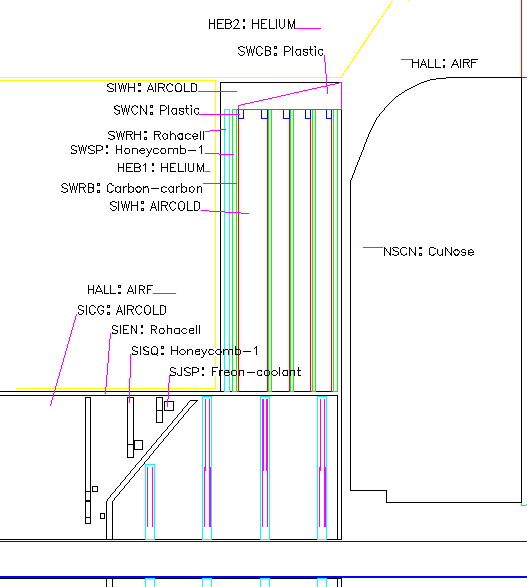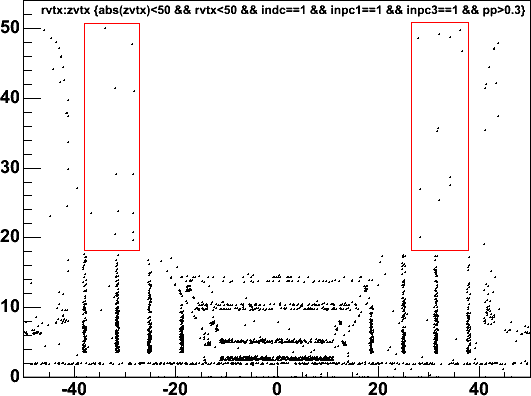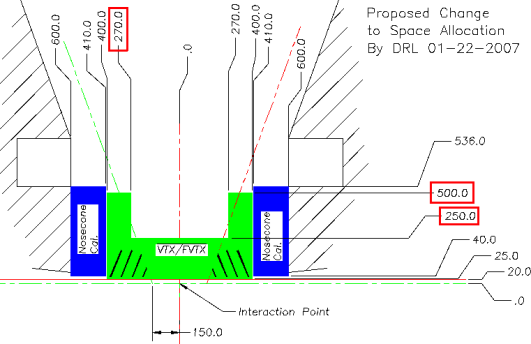Click for a bigger view Description below.


| View of 1/2 of the vtx/fvtx. The readout wheels on either end consist
of 5 planes.
An exploded view is here.
Click for a bigger view Description below. |

|
| Simplified cross section |

|
| Plane | Zmin,max | material | Rin | Rout |
|---|---|---|---|---|
| 1 | 27.42-xxx | 4.85mm honycomb + PCB | 24 | 50 |
| 2 | 31.89-xxx | PCB + 3.18mm thermal plane | 24 | 50 |
| 3 | 34.34-xxx | PCB + 3.18mm thermal | 24 | 50 |
| 4 | 36.78-xxx | PCB + 3.18mm tharmal | 24 | 50 |
| 5 | xxx-40.00 | PCB + 4.85mm honeycomb | 2.7 | 50 |

| |||||||||||||||||||||||||
| I modeled these materials in Pisa. For the wheels, I claimed a volume SIWH extending
from the svx cylinder SIEN out to just short of Helium bag #2 HEB2, and in Z from 26.5-40.0 cm. I shortened
Helium bag #1 HEB1 from z=+-30 cm to 26 cm.
In the figure above, we have:
Files needed (strip the .txt extension after downloading) : (updated 28 Feb 2007) |
| ||||||||||||||||||||||||
| Sasha made a radiogram:
Hi all, I've used Hubert's implementation of "big wheels" in pisa to check how much they will affect electron background in central arms. I found that the increase in electron background will be very small, only ~2%. One problem is that the default pisa does not have these "big wheels" at all, so the answer is not exactly to the question we were asked, namely, how the extension of big wheels will affect the background. But since the wheels as a whole contribute only 2 additional percent, I think the answer is good enough. I've attached a plot of R_origin vs Z_origin for the electrons with momentum > 0.3 GeV which are in central arms (that is, produce hits in dch, pc1, and pc3). The plot was done with 100 MinBias AuAu Hijing events. If you count electons originating in the big wheels, and compare to the total number of electrons coming from the VTX, you get ~2%. Sasha. | 
| ||||||||||||||||||||||||
| Note that the most recent control drawing (1 Mar 07) is a little different: 500 instead of 530 (I took another 30mm for cables), 270 instead of 265 (I took another 5mm for thermal insulation), and 250 instead of 187. | 
| ||||||||||||||||||||||||